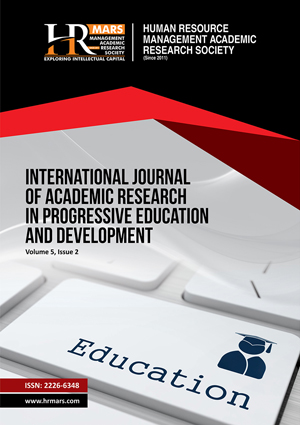
ISSN: 2226-6348
Open access
This study aims to explore how to use ResNet (deep residual network) to realize the automatic evaluation and optimization of video quality in the MOOC (large-scale open online course) platform. As a key component of modern education, the MOOC platform faces the challenge of ensuring high-quality video content. Manual evaluating and optimizing video quality is time-consuming and influenced by subjective factors, limiting the improvement of educational effects. This study based on ResNet explores its application in video frame analysis, video quality assessment metrics and methods, and automated optimization strategies. Specifically, we investigate the potential applications of ResNet for video clarity, fluency, stability, anomaly detection, and automatic parameter adjustment and propose corresponding automatic optimization methods. Through experimental validation, we show the effectiveness of ResNet in MOOC video quality assessment and optimization. This study offers new possibilities to improve the quality and effectiveness of online education.
Chang, V. (2016). Review and discussion: E-learning for academia and industry. International Journal of Information Management, 36(3), 476–485.
https://doi.org/10.1016/j.ijinfomgt.2015.12.007.
Conrad, D., & Openo, J. (2018). Assessment Strategies for Online Learning: Engagement and authenticity. https://doi.org/10.15215/aupress/9781771992329.01.
Cvetkovi?, D. (2021). MOOC (Massive Open Online Courses). In IntechOpen eBooks. https://doi.org/10.5772/intechopen.95166.
Daniel, J. (2012). Making Sense of MOOCs: Musings in a Maze of Myth, Paradox and Possibility. Journal of Interactive Media in Education, 2012(3), 18. https://doi.org/10.5334/2012-18.
Escueta, M., Nickow, A. J., Oreopoulos, P., & Quan, V. (2020). Upgrading Education with Technology: Insights from Experimental Research. Journal of Economic Literature, 58(4), 897–996. https://doi.org/10.1257/jel.20191507.
Hew, K. F., Qiao, C., & Tang, Y. (2018). Understanding Student engagement in Large-Scale Open Online courses: a machine learning facilitated analysis of student’s reflections in 18 highly rated MOOCs. The International Review of Research in Open and Distributed Learning, 19(3). https://doi.org/10.19173/irrodl.v19i3.3596.
Kumar, A., Krishnamurthi, R., Bhatia, S., Kaushik, K., Ahuja, N. J., Nayyar, A., & Masud, M. (2021). Blended Learning Tools and Practices: A Comprehensive analysis. IEEE Access, 9, 85151–85197. https://doi.org/10.1109/access.2021.3085844.
Loizzo, J., Ertmer, P. A., Watson, W. R., & Watson, S. L. (2017). Adult MOOC Learners as Self-Directed: Perceptions of Motivation, success, and Completion. Online Learning, 21(2). https://doi.org/10.24059/olj.v21i2.889.
Masters, K. (2011). A Brief Guide To Understanding MOOCs. The Internet Journal of Medical Education, 1(2). https://doi.org/10.5580/1f21.
Rapanta, C., Botturi, L., Goodyear, P., Guàrdia, L., & Koole, M. (2020a). Online university teaching during and after the COVID-19 crisis: Refocusing teacher presence and learning activity. Postdigital Science and Education, 2(3), 923–945.
https://doi.org/10.1007/s42438-020-00155-y.
Rapanta, C., Botturi, L., Goodyear, P., Guàrdia, L., & Koole, M. (2020b). Online university teaching during and after the COVID-19 crisis: Refocusing teacher presence and learning activity. Postdigital Science and Education, 2(3), 923–945.
https://doi.org/10.1007/s42438-020-00155-y.
Roddy, C., Amiet, D. L., Chung, J., Holt, C., Shaw, L., McKenzie, S., Garivaldis, F., Lodge, J. M., & Mundy, M. E. (2017). Applying Best Practice Online Learning, Teaching, and Support to Intensive Online Environments: An Integrative Review. Frontiers in Education, 2. https://doi.org/10.3389/feduc.2017.00059.
Wang, L., Hu, G., & Zhou, T. (2018). Semantic analysis of learners’ emotional tendencies on online MOOC education. Sustainability, 10(6), 1921.
https://doi.org/10.3390/su10061921.
Wenling, L. (2024). Automatic Video Quality Assessment and Optimization of MOOC Platform Using ResNet. International Journal of Academic Research in Progressive Education and Development, 13(4), 1935–1949.
Copyright: © 2024 The Author(s)
Published by HRMARS (www.hrmars.com)
This article is published under the Creative Commons Attribution (CC BY 4.0) license. Anyone may reproduce, distribute, translate and create derivative works of this article (for both commercial and non-commercial purposes), subject to full attribution to the original publication and authors. The full terms of this license may be seen at: http://creativecommons.org/licences/by/4.0/legalcode